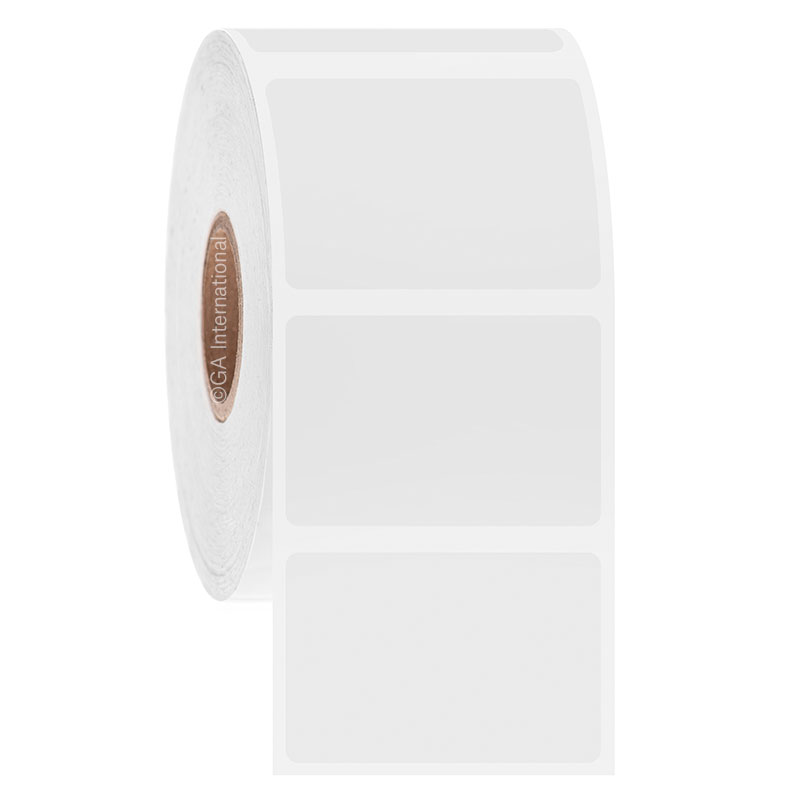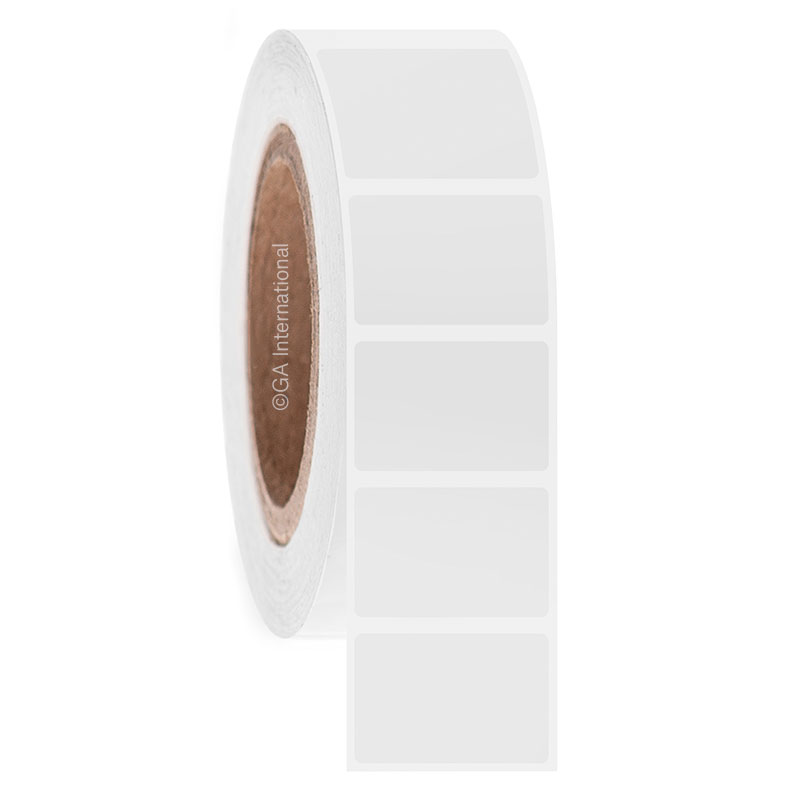Description
Extended Exposure Chemical-Resistant RFID labels
Size: 1.5″ x 1″ / 38.1mm x 25.4mm
Label across: 1
Color: White
Labels/roll: 1,000
Core size: 1” or 3” / 25.4mm or 76mm
Perforation: No
Adhesive: Permanent chemical-resistant, superior strength
Temperature range: -80°C to +120°C (-112°F to +248°F)
Operating temperature/RFID functional temperature range: -35°C to +85°C / -31°F to +185°F
Recommended ribbons: XAR-Class Xylene Resistant Resin Ribbons
Recommended Printer: Zebra ZD621R UHF RFID Thermal-Transfer Printer
Recommended Reader: Unitech Handheld UHF RFID Reader
Recommended Label software: BarTender Professional
We have combined our chemical and solvent-resistant labels with current RFID technology to create a durable RFID label that can withstand exposure to harsh chemicals and solvents. These RFID labels are designed for a variety of applications where visual and electronic data require chemical resistance for maximum traceability and tracking.
These RFID labels have the same robust, chemical-resistant adhesive as our standard extended exposure chemical-resistant labels and will display the same adhesion properties, even in the harshest environments. These labels are intended for use on surfaces that will undergo extended exposure to chemicals and solvents, such as bulk containers, drums, gallon buckets, and glass reagent bottles.
Chemical and solvent-resistant RFID labels are compatible with handheld, fixed, and integrated UHF RFID readers. Designed to integrate with tracking and chemical inventory management systems to improve the identification of each item, as well as safety and process productivity. These RFID labels are intended for chemical industries, as well as petrochemical, agriculture (fertilizer), and manufacturing sectors wherever container identification requires a high level of chemical resistance and monitoring.
When printed using our recommended XAR-class of ink ribbons, the visual and electronic components of these labels will resist continuous rubbing and immersion in harsh chemicals. These UHF RFID labels (Class 1, Gen 2) can be printed and encoded with up to 32 hexadecimal characters of information using dedicated RFID thermal-transfer printers. The printout of these industry-grade labels can consist of alphanumeric text, 1D and 2D barcodes, as well as serialized RFID or printed data.
Benefits:
- 12” omnidirectional read range*, without direct line-of-sight ensures quick, easy, and accurate reading from every angle
- Read multiple labeled containers at the same time.
- Withstand exposure and long-term immersion in harsh chemicals and solvents
- Strong permanent adhesive adheres to flat plastic and glass surfaces
Chemical-resistant RFID labels’ color and size can be customized upon request.
* When using our recommended RFID reader. Read range can vary according to the RFID reader being used. Labels should not be enclosed by metal surfaces as this may cause interference that can affect their ability to be scanned/read.











Reviews
There are no reviews yet.